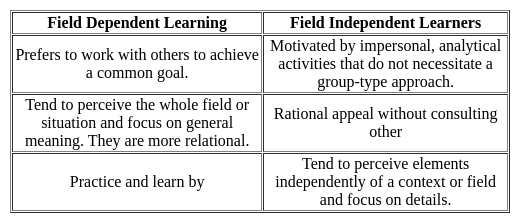Test: Teaching Aptitude (Characteristics of Learners) - Software Development MCQ
10 Questions MCQ Test - Test: Teaching Aptitude (Characteristics of Learners)
Which of the following characteristics is true for slow learners?
Which of the following is/are not the characteristics of an adult learner?
Which of the following are the characteristics of an adolescent?
A. Increasing independence from adult control
B. Rapid physiological changes
C. Emotionally matured
D. Acts rationally
E. Increased focus on activities with peer groups
Choose the correct answer from the options given below:
The learner's characteristics that impacts learning the most are :
Which of the following adolescent's learner characteristics ensures the positive results and likely to influence effectiveness of teaching aids?
Which of the following is a social characteristic of a learner?
Which of the following is NOT the characteristic of a well-adjusted individual?
Identify the characteristics of ‘Field-independent learner’
(A) Seeks guidance and demonstrations from teacher
(B) Focuses on details of curriculum materials
(C) Likes to compete
(D) Relates concepts to personal experience
(E) Can organize information by himself or herself
Choose the correct answer from the options given below:
Restlessness and poor attention are the characteristics associated with which of the given disabilities?
Which of the following learner characteristics is highly related to the effectiveness of teaching?



















